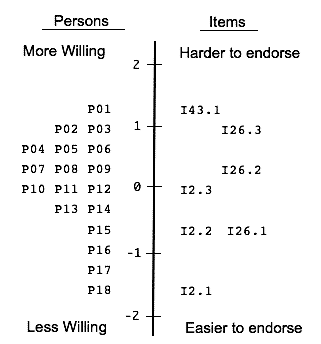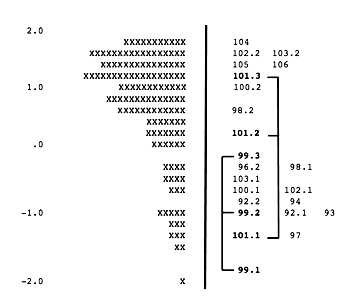| Model |
Example tasks |
Fundamental inference |
| Dichotomous model |
Select or produce the one acceptable answer to a test item |
How much of the attribute is required to succeed at this task? |
| Rating scale model |
Honestly endorse a response category on a questionnaire |
How much of this attribute (attitude, trait, orientation, etc.) is required to (strongly) agree or disagree with this statement? |
| Partial credit model |
Choose or produce the better of several possible responses
Complete one or more sequential steps in a complex task |
How much of the attribute is required to enable one to reject some attractive distractors?
How much of the attribute is required to complete this many steps of the task?
|
| Many-facets model |
Attain a desirable score from a rater observing a performance, usually further defined by a set of prompts and descriptors |
How much of the attribute is required to generate a performance sufficient to induce a rater of severity Z to award a score of Y on a performance task of difficulty D? |


 PDF Version
PDF Version

